Art World
Want to See an Art Fair in One Hour or Less? Here Are 5 Ruthlessly Tactical Tips From Veteran Viewers
Prepare to be ruthless.
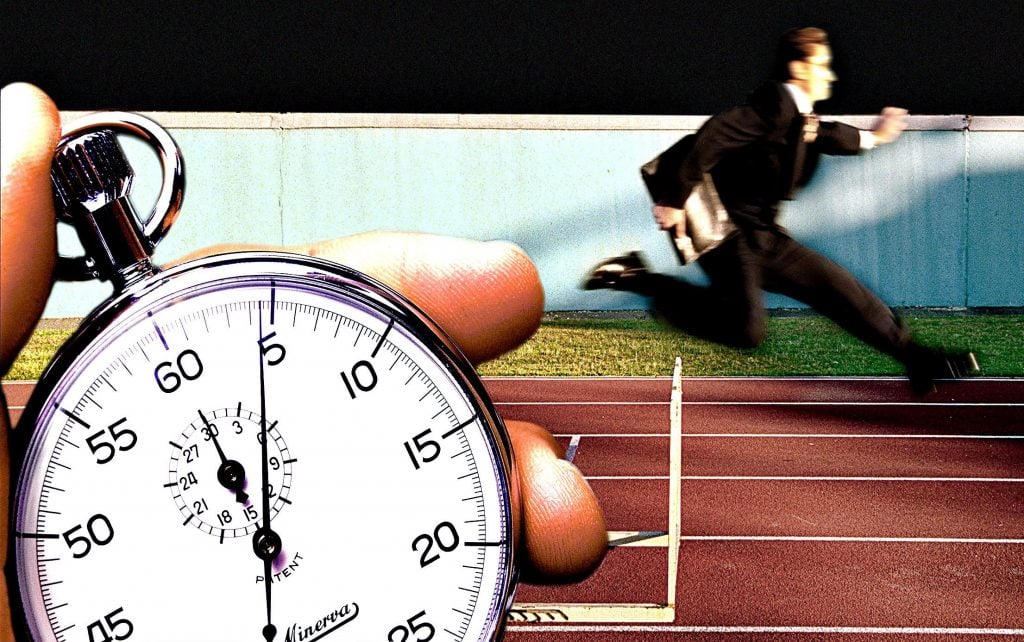
Prepare to be ruthless.

Janelle Zara

Who among us does not know the crushing sensation of fairtigue? Sometime in the last decade, as art fairs transitioned from a seasonal schedule to the continuous rotation of a hamster wheel, this clever portmanteau emerged to describe the white-collar exhaustion of the art-consuming class.
Are we over schlepping from city to city, from booth to booth? Yes. Does this mean we’ll stop going? Absolutely not. The live art fair performs an important function in the industry that transcends the purchase of work. (If we’re being honest, these days you can make most transactions in advance.) We go to fairs to survey the landscape, to discover new artists, and to connect with peers in other cities. The more these tasks have been made available online, the more we value the opportunity to make contact in person.
After all, says New York-based collector Candace Barasch, “Not everything translates on a JPEG.”
Because the hours in the day are finite, and Frieze Week in New York is already upon us, Artnet News quizzed three fair veterans—Barasch, senior Kasmin director Nick Olney, and Lucas Museum chief curator Pilar Tompkins Rivas—on their pro tips on efficient fair-going. Below, find out how to make the most of your time in the aisles. As we all know, time is money—and time is the one commodity that cannot be flipped.
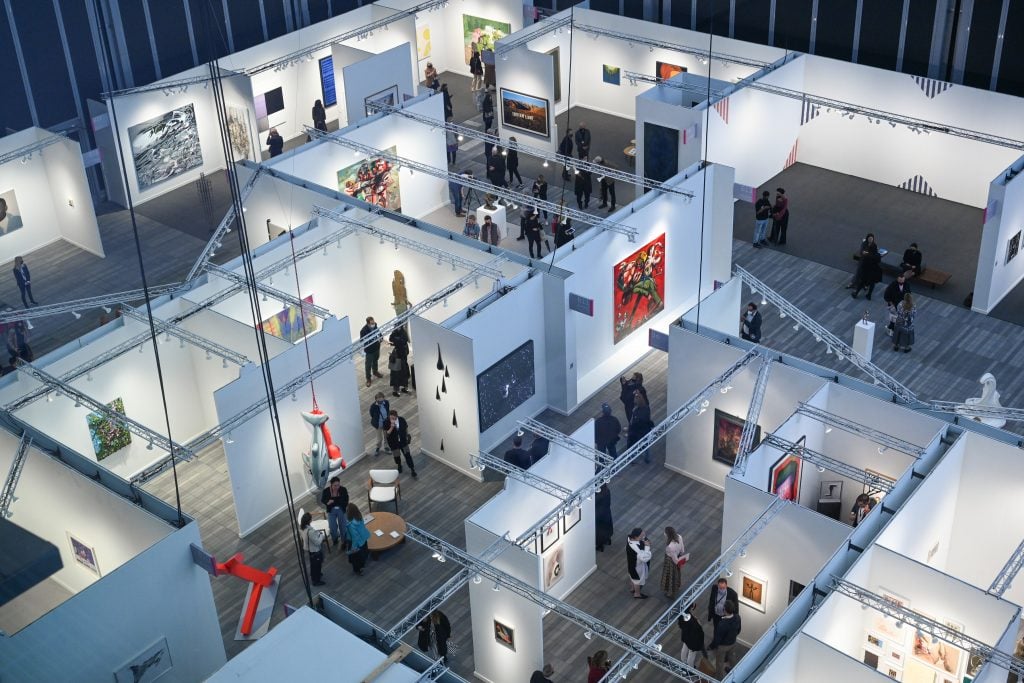
The booths at Frieze New York at the Shed in Hudson Yards. Photo by Casey Kelbaugh. Courtesy of Casey Kelbaugh/Frieze.
Our first piece of advice is of the utmost common sense: As a wise queen might say, “If you stay ready, you ain’t got to get ready.” In the art fair context, this means showing up at the correct entrance at the correct time with your ticket/confirmation email and ID—and if required, vaccination status—in hand. Just ask Tompkins Rivas how many times she’s had to ask for directions or fumble around in her purse in search of accreditation. “Never,” she says. “My approach is always to have everything ready in advance: all the passes I need, and a specific agenda.”
What’s on your agenda? Ideally it’s taking a good look at the works you’re interested in, rather than a cursory drive-by of every single booth—we’re here for quality, people, not quantity. Ahead of the event, take some time to request PDFs via email, scan the fair’s website for work that piques your interest, and check for artists with shows in local institutions. On site, “If you see people that you know and trust, ask them for highlights or things not to miss,” Olney says. (If you, like me, live extremely online, the equivalent is noting who’s trending on your social media feed, and checking if the work stands up IRL.) “If I’m focused and really paying attention, the fair is a learning exercise,” says Barasch. Note that it may require a sartorial sacrifice: Tompkins Rivas says it took several years of “fussing around with heels” to realize you’re faster and more fully present when you’re wearing comfortable shoes.
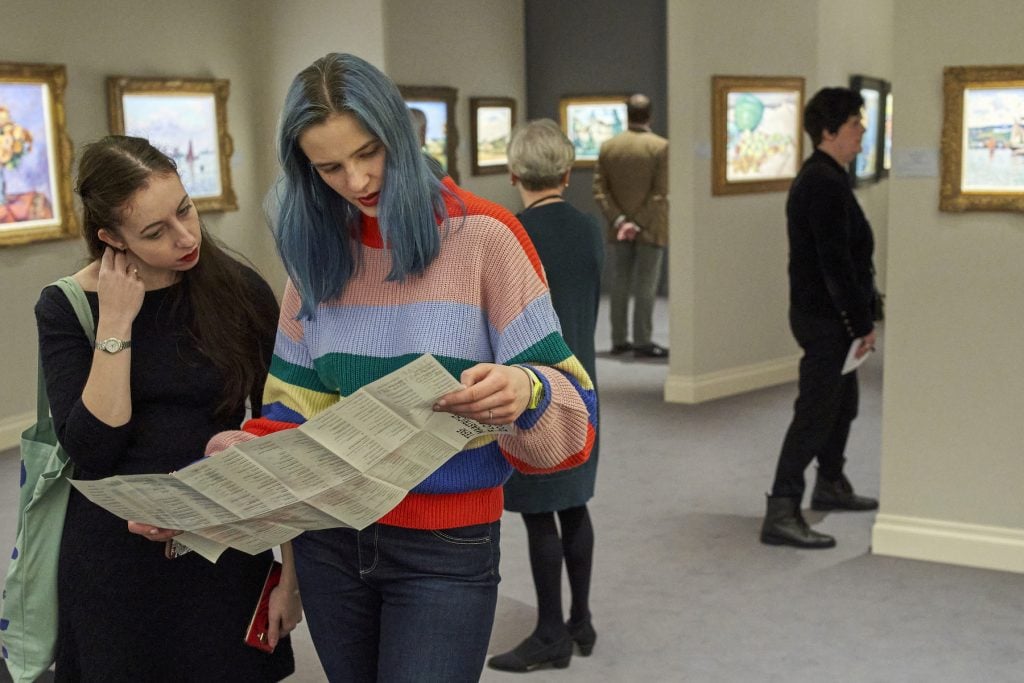
Two visitors look at a map during the TEFAF art fair on March 7, 2020, in Maastricht, Netherlands. Photo: courtesy Getty Images.
Your phone is your friend here: use it to navigate and make notes, or take Barasch’s old-school approach and plot out your points of interest on a map, tracing out the most efficient route between them. But “be open to serendipity,” Olney adds. If you see something that really catches your eye, “break from your plan to really spend time with that work.”
Also check for special projects and sections dedicated to younger galleries—your Frieze Focus, your Art Basel Statements, your Armory Show Presents. Usually located toward the back of the fair, this is where you’re most likely to find works you haven’t seen before, Tompkins Rivas says. “I tend to start there, then make my way back to the larger, blue-chip galleries.”
It is the easiest time in art-fair history to get away with not talking to anyone. Recall Tiana Webb Evans’s advice from our pandemic installment of art-fair how-to’s: show up double-masked and wave briskly from afar, and people will know to leave you alone.
That strategy, however, does not maximize your time at the fair. This is your opportunity to connect with the dealers who represent artists you care about, so take it, especially if they live abroad. Tap into regions you’re unfamiliar with: Barasch makes a point to connect with Glasgow’s The Modern Institute whenever they cross paths. “Will I make it out to Scotland? I’m not sure,” she says. “But they have an excellent program.”
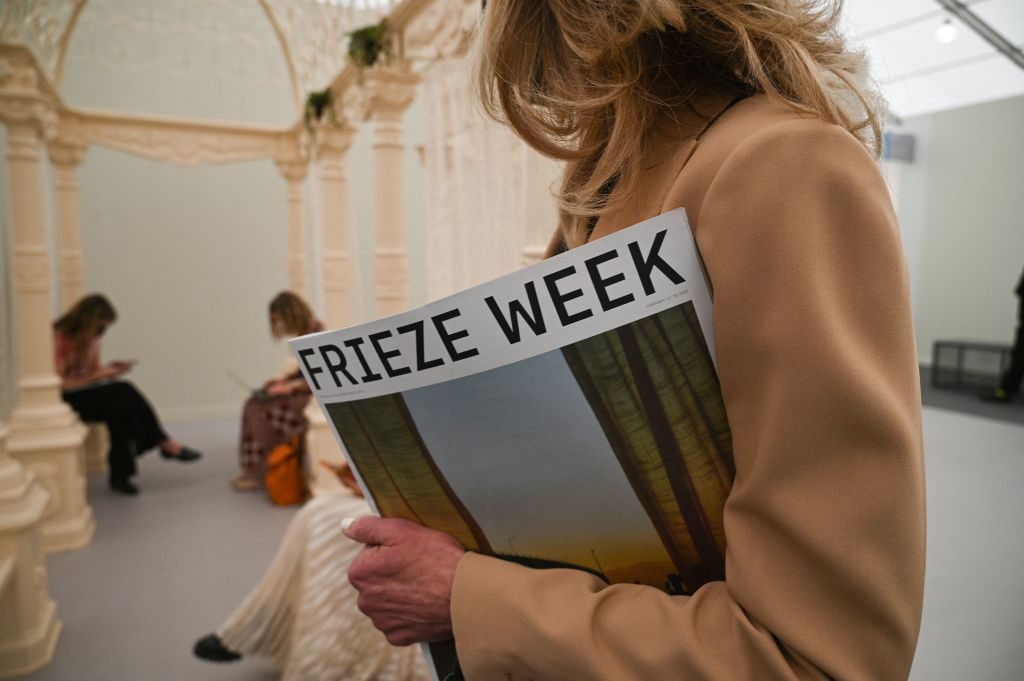
An attendee holds the Frieze Week Magazine on the first day of Frieze Los Angeles, February 17, 2022 in Beverly Hills, California. Photo: Robyn Beck/AFP via Getty Images.
When you see a friend, but there’s no time to chat, “touch base with a quick hello and keep it moving,” advises Tompkins Rivas; this is the sophisticated alternative to awkwardly pretending you didn’t see them. And if you’ve been caught in an acquaintance’s rambling account of their child’s college admissions status? Nothing cuts a too-long conversation short like a friendly slap on the arm and a hardy “Well, it was great to see you!”
Getting out of a conversation is easy, but gracefully cutting into one is an advanced skill. If you have a question for a dealer who’s engaged with someone else, do not— I repeat, do not—interrupt a sale. Rather, you can “politely stay visible,” Olney says. If you can catch a director’s eye for just a second, they’ll likely signal “whether they’re going to be engaged in conversation for a long time, or they’re wrapping up.” No nod? That’s a good indication of the former, and in that case, don’t dawdle—either take your question to an assistant, or take a business card and move on.
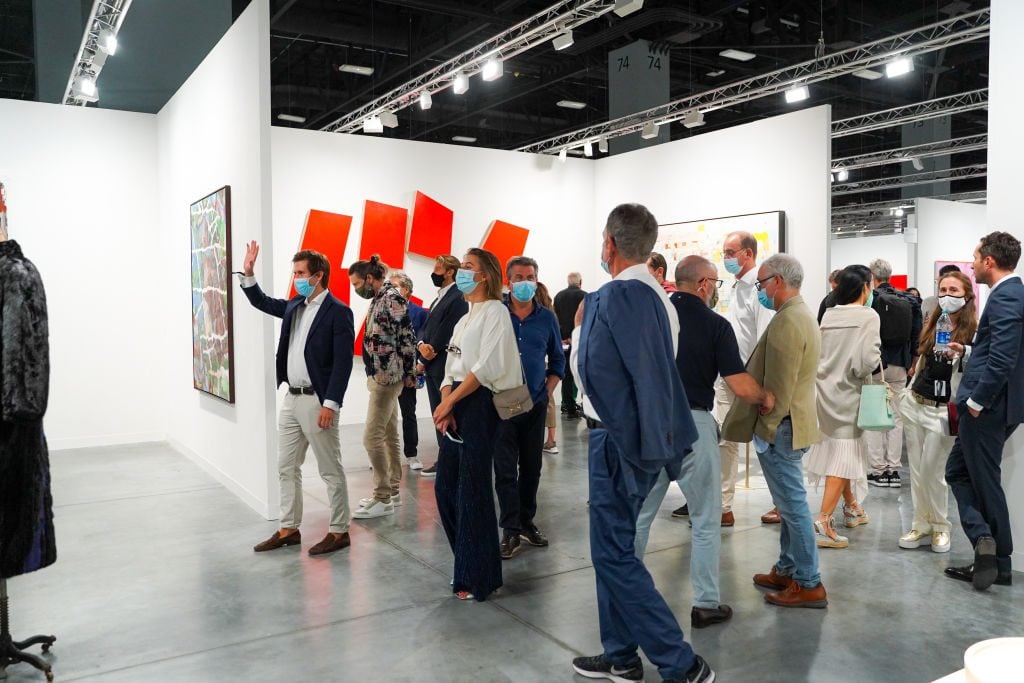
White Cube’s booth at the VIP preview for Art Basel Miami Beach on November 30, 2021. Photo: Sean Zanni/Patrick McMullan via Getty Images.
When you’re short on time, timing is everything; crowd size and therefore dealer availability will fluctuate throughout the fair. If you’re a seasoned collector with your eyes on a specific work, “You’ve got to be there as quickly as you can,” says Barasch—usually the wee hours of the VIP preview. For the more casual viewer, on the other hand, Olney recommends Thursdays and Fridays: “There won’t be the weekend crowds, or that full rush of opening day when everyone’s really engaged in specific sales conversations.”
Good timing is also prioritizing the tasks best done in person—viewing work and cultivating relationships—during your hour at the fair. The rest you can save for later. That panel discussion you missed? You’ll find it later on YouTube. Extended reading? Grab press releases and snapshot wall texts to review once you’re back at the hotel. And for all the conversations you missed or cut short, or long-shot waiting lists you joined, follow up via email. “Gallerists see the fairs as a way to start conversations,” Olney says. “Those can be continued post-fair when everyone has more time.”